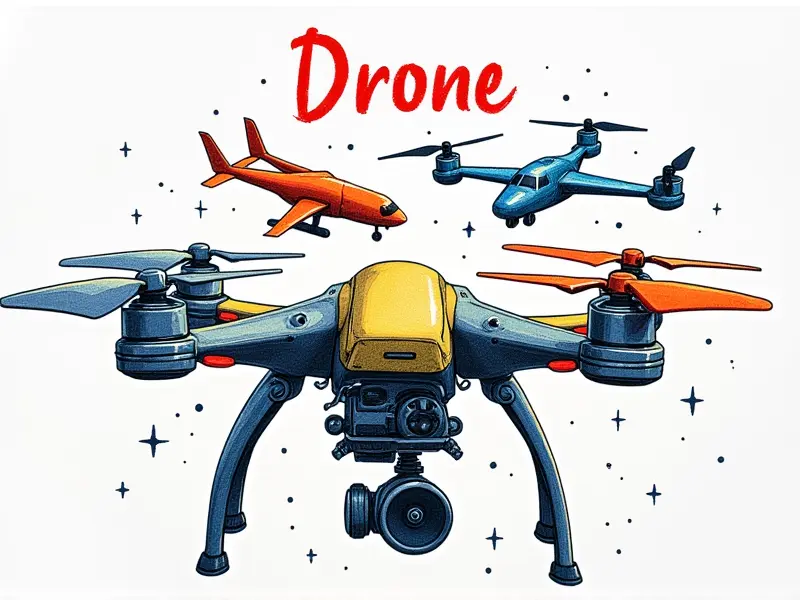Can I use FPV with RC planes?

Flying Radio Controlled (RC) planes is a thrilling hobby that offers endless possibilities for adventure and excitement. One of the most exciting advancements in recent years has been First Person View (FPV) technology, which allows pilots to experience their flights as if they were inside the aircraft itself. This article delves into how FPV can be integrated with RC planes, the benefits it brings, and tips on maximizing your flying experience.
How to Add FPV to Your RC Plane
The process of adding FPV capabilities to an RC plane involves several key steps:
- Selecting a Camera: Choose a camera that suits the size and weight constraints of your aircraft. Common choices include lightweight, high-resolution cameras like the GoPro Hero or DJI Osmo.
- Installing an FPV Video Transmitter (VTX): The VTX is crucial for transmitting video signals from the camera to a ground-based receiver. Ensure it has sufficient range and power output.
- Connecting the Components: Properly wire the camera, VTX, and any additional accessories such as GPS or telemetry modules.
- Setting Up Ground Equipment: Install an FPV monitor or goggles to receive video signals from your aircraft. Ensure all connections are secure for reliable transmission.
Best FPV Gear for RC Planes
Selecting the right gear is essential for a seamless FPV experience. Here are some top recommendations:
- Cameras: GoPro Hero, DJI Osmo Action, and FatShark Freestyle Mini.
- Video Transmitters (VTX): Runcam Swift 2, ImmersionRC VTX Nano, and TBS Unify Pro X.
- Antennas: High-gain antennas like the FatShark HDA-30 or TBS Crossfire Antenna for extended range.
- FPV Goggles: FatShark Dominator HD+, Runcam Halo, and TBS Unify Pro X.
Transforming RC Planes with FPV Technology
The integration of FPV technology transforms the way you interact with your RC plane. It offers a more immersive flying experience by providing real-time video feedback from the aircraft's perspective, enhancing control and situational awareness.
Guide to FPV in RC Aircraft
This section provides a comprehensive guide on setting up and using FPV technology for RC planes:
- Understanding Basic Components: Learn about the essential components like cameras, VTXs, antennas, and goggles.
- Troubleshooting Common Issues: Address problems such as signal interference or poor video quality.
- Optimizing Flight Performance: Tips for improving flight stability and range through proper setup and calibration.
Why FPV is Perfect for RC Planes
FPV technology enhances the RC flying experience in several ways:
- Enhanced Control: Real-time video feedback allows for precise control over your aircraft's movements.
- Increased Range: High-quality VTXs and antennas provide extended range, enabling flights beyond line-of-sight.
- Safety Improvements: FPV helps in maintaining situational awareness, reducing the risk of crashes or losing sight of your plane.
FPV Integration Tips for RC Planes
To ensure a smooth and enjoyable FPV experience, consider these tips:
- Lightweight Components: Opt for lightweight cameras and VTXs to maintain optimal flight performance.
- Battery Management: Ensure your aircraft has sufficient battery capacity to support both the flight time and FPV gear.
- Weather Considerations: Be mindful of weather conditions that can affect signal transmission, such as rain or fog.
Advantages of Using FPV on RC Planes
The advantages of using FPV technology for RC planes are numerous:
- Immersive Experience: Feel like you're inside the plane, enhancing your enjoyment and engagement.
- Better Control: Real-time video feedback allows for more precise control over flight maneuvers.
- Safety Enhancements: FPV helps in maintaining situational awareness, reducing the risk of crashes or losing sight of your plane.
Maximize Fun: FPV on RC Planes
To get the most out of your FPV experience with RC planes, follow these tips:
- Practice Regularly: The more you fly, the better you'll become at handling your aircraft.
- Experiment with Different Gear: Try various cameras and VTXs to find what works best for your setup.
- Join Local FPV Communities: Engage with other enthusiasts to learn new techniques and share experiences.
The Ultimate Guide to FPV RC Planes
This guide covers everything you need to know about integrating FPV technology into your RC plane hobby, from selecting the right gear to optimizing performance. Whether you're a beginner or an experienced pilot, this comprehensive resource will help you enhance your flying experience.
Benefits of Using FPV on RC Planes
The benefits of using FPV technology for RC planes are clear:
- Better Control and Precision: Real-time video feedback allows for more accurate control over flight maneuvers.
- Extended Range: High-quality VTXs provide extended range, enabling flights beyond line-of-sight.
- Safety Enhancements: FPV helps maintain situational awareness and reduces the risk of crashes or losing sight of your plane.
Can You Fly RC Planes with FPV Gear?
Absolutely! With the right gear and setup, you can enjoy an immersive flying experience that enhances control, range, and safety. Whether you're a beginner or an experienced pilot, integrating FPV technology into your RC plane hobby is a rewarding endeavor.
Conclusion
Incorporating FPV technology into your RC plane hobby offers numerous benefits, from enhanced control and precision to extended range and improved situational awareness. By following the tips and recommendations outlined in this guide, you can maximize your enjoyment and safety while flying RC planes with FPV gear.

